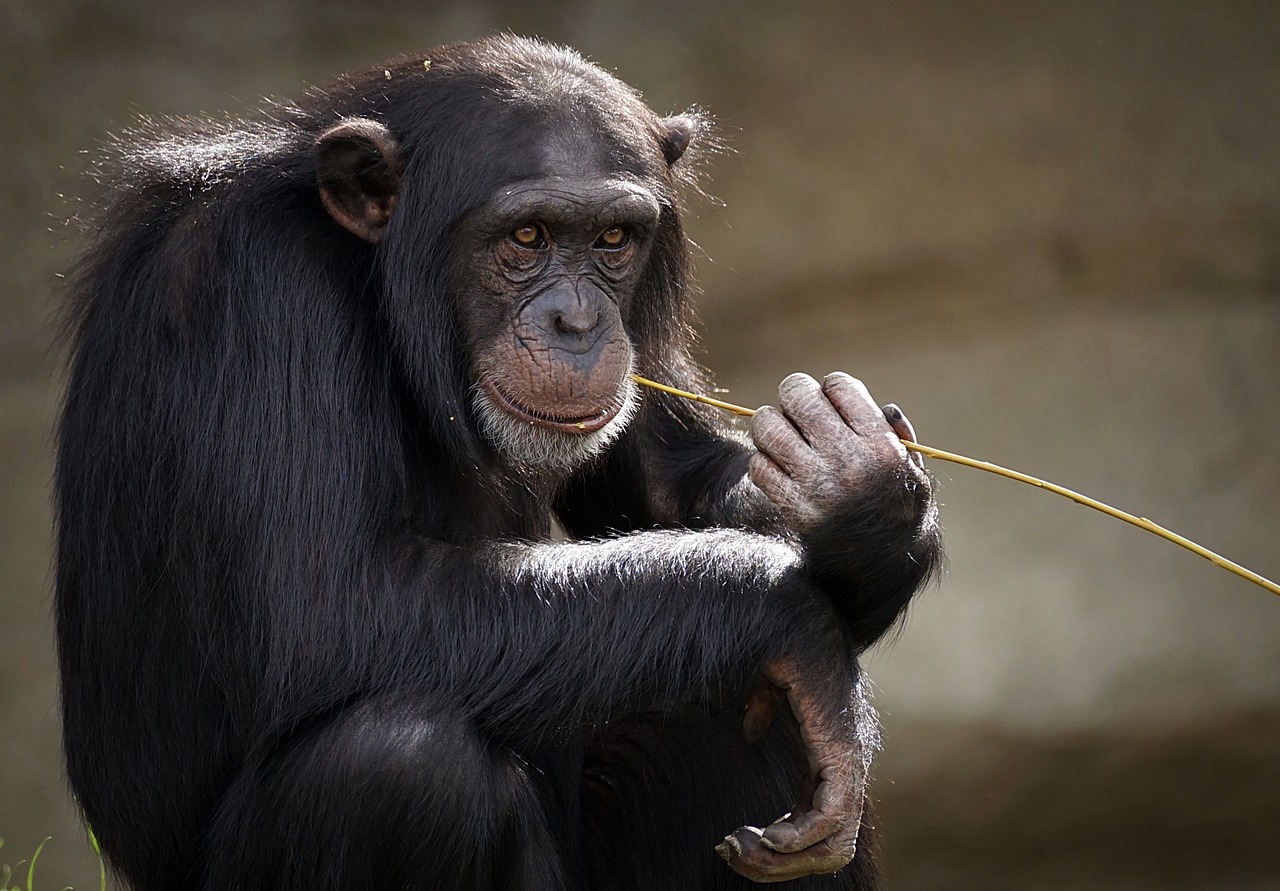- Chimpanzees are highly intelligent primates and are the closest living relatives to humans.
- They share approximately 98% of their DNA with humans, making them our closest evolutionary relatives.
- Chimpanzees are native to Africa and are found in various forested regions across the continent.
- They live in complex social groups called communities, which can consist of up to several dozen individuals.
- Chimpanzees are known for their remarkable tool-making and tool-using abilities, using objects like sticks or stones to accomplish tasks.
- They have been observed using tools for various purposes, including hunting, extracting food, and even self-defense.
- Chimpanzees have a diverse diet, consisting of fruits, leaves, seeds, insects, and occasionally small mammals.
- They are capable hunters and have been observed working together to capture and consume prey, such as monkeys or small antelopes.
- Chimpanzees communicate with each other using a complex system of vocalizations, gestures, and facial expressions.
- They have been observed exhibiting distinct regional cultures within different chimpanzee communities, with unique behaviors and customs.
- Chimpanzees have a highly developed social structure, with dominant males often leading their communities and forming alliances.
- They engage in complex social interactions, including grooming, playing, and forming strong bonds with other group members.
- Chimpanzees have been shown to possess self-awareness, as demonstrated through mirror self-recognition tests.
- They display emotions such as happiness, sadness, fear, and anger, exhibiting a wide range of facial expressions and behaviors.
- Chimpanzees are capable of problem-solving and have demonstrated their ability to solve puzzles and navigate complex tasks.
- They are skilled climbers and spend a significant amount of time in trees, using their long arms and dexterous hands to move among branches.
- Chimpanzees have a lifespan of approximately 40 to 50 years in the wild, although they can live longer in captivity.
- They have been observed using leaves or other materials as tools for cleaning and hygiene purposes.
- Chimpanzees engage in elaborate courtship displays and mating rituals, including vocalizations, displays of strength, and grooming behaviors.
- Female chimpanzees typically give birth to a single offspring after a gestation period of around 8 months.
- Chimpanzees exhibit a high degree of parental care, with mothers nurturing and protecting their young for several years.
- They have a wide range of vocalizations, including screams, hoots, and pant-hoots, which serve various communicative purposes.
- Chimpanzees have been observed engaging in territorial disputes with neighboring groups, often resulting in aggressive encounters.
- They have been the subject of extensive scientific research, contributing to our understanding of primate behavior, cognition, and evolution.
- Chimpanzees have been trained to understand and use sign language, demonstrating their ability to comprehend and communicate with humans.
- They possess a strong sense of community and exhibit behaviors such as sharing food, comforting distressed individuals, and forming alliances.
- Chimpanzees have been observed using leaves as umbrellas to shield themselves from rain or as makeshift bedding for comfort.
- They have been shown to exhibit cultural behaviors, with different chimpanzee communities having distinct traditions and learned behaviors.
- Chimpanzees have been found to display empathy and altruism, assisting injured or sick group members.
- They are susceptible to various diseases, including respiratory infections and Ebola virus, which have had devastating effects on their populations.
- Chimpanzees have been studied for their cognitive abilities, including their understanding of cause and effect and their ability to solve problems using logical reasoning.
- They have been observed using different types of gestures and vocalizations to communicate specific messages to other chimpanzees.
- Chimpanzees have a complex system of dominance and hierarchy within their communities, with alpha males often leading and protecting the group.
- They have a highly developed memory, allowing them to remember and recognize individual faces, locations, and social relationships.
- Chimpanzees have been taught to use computers and touchscreens in research settings, demonstrating their ability to learn and respond to visual stimuli.
- They have been documented engaging in playful behaviors, such as chasing, wrestling, and tickling each other.
- Chimpanzees are capable of using their environment creatively, fashioning tools and solving problems in innovative ways.
- They have been observed using strategic deception, such as bluffing or misleading other chimpanzees to gain advantages in social interactions.
- Chimpanzees have been trained to understand and follow simple commands, allowing for cooperative interactions with humans in research and conservation efforts.
- They exhibit curiosity and exploration behaviors, investigating their surroundings and experimenting with objects and tools.
- Chimpanzees have been affected by habitat loss and fragmentation, primarily due to deforestation and human encroachment on their natural habitats.
- They are listed as endangered species, facing significant conservation challenges to ensure their long-term survival.
- Chimpanzees have been the subject of conservation efforts and protected in national parks and reserves across Africa.
- They are the focus of various conservation organizations and research institutions working to protect their habitats and promote their well-being.
- Chimpanzees are studied in sanctuaries and rehabilitation centers, providing care and support for individuals rescued from illegal wildlife trade or orphaned.
- They have complex problem-solving skills and have been known to create and use tools for specific purposes, such as using sticks to extract termites from their mounds.
- Chimpanzees have distinct personalities, with some individuals being more dominant, assertive, or sociable than others.
- They exhibit cultural behaviors, passing on knowledge and traditions from one generation to another, such as using specific tools or techniques for hunting or gathering food.
- Chimpanzees are highly adaptable and can survive in various habitats, including rainforests, woodlands, and savannas.
- They continue to be a subject of scientific research, conservation efforts, and public fascination due to their close genetic relationship to humans and their fascinating behaviors and cognitive abilities.
Facebook Comments


































